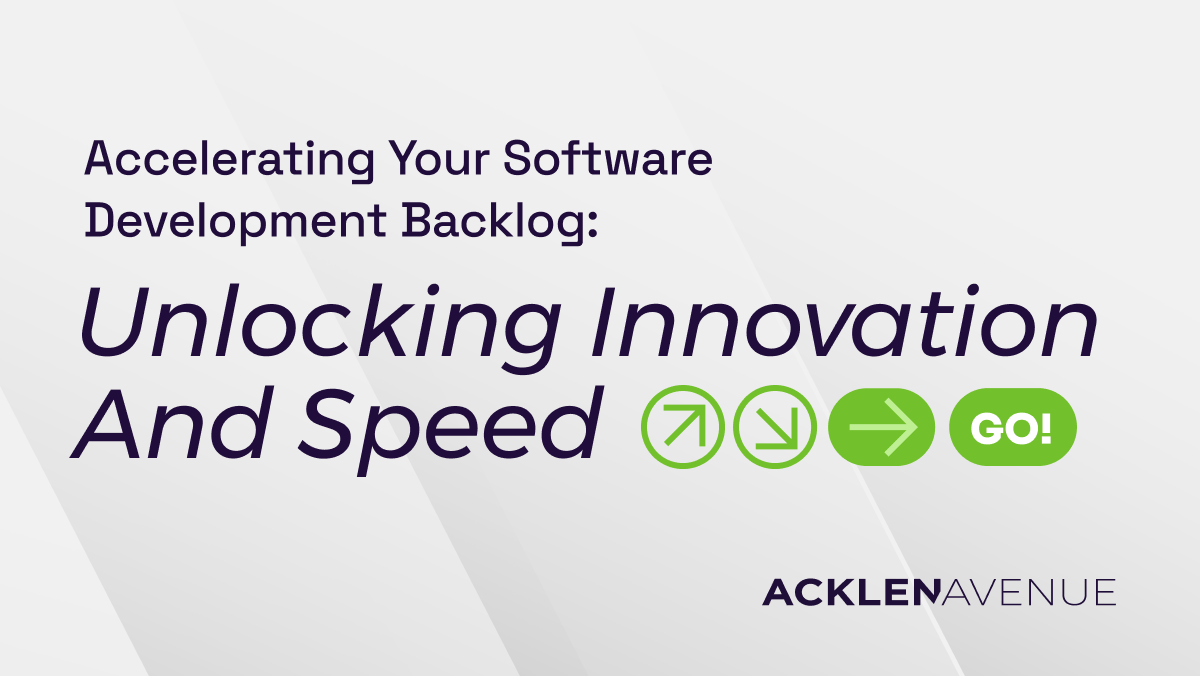
June 2, 2025
What’s an MVP? A simple guide to software development for non-tech founders.
October 1, 2024

Share:
A well-maintained software development backlog that regards both short- and long-term business value, can be the difference between a smooth-running, innovative team and one that is constantly playing catch-up. For product managers, developers, and stakeholders, the goal isn’t just about reducing the backlog — it’s about accelerating it effectively. This means balancing the need to deliver new features with the challenge of maintaining older systems.
Done right, taking a balanced approach to backlog execution unlocks your team’s potential, allowing innovation to flourish, outdated code to be modernized, and new technologies to be integrated seamlessly.
Pushing through your backlog faster does more than clear tasks off the list. It drives better product outcomes and provides flexibility when tackling multiple initiatives simultaneously. The more backlog tasks you complete, the more capacity your team has for experimenting with new ideas and rolling out new features. Here’s why accelerating your backlog matters:
The backlog is often a mix of feature requests, bug fixes, technical debt, and optimization tasks. Moving through it faster doesn’t mean rushing but applying smarter strategies. Here’s how:
Not everything in the backlog is of equal importance. Make sure that the highest-value tasks are always prioritized. High-value tasks are those that align directly with business goals, improve user experience, or unblock other critical work.
It’s easy for a backlog to get cluttered with outdated tasks or features that no longer align with business goals. Regular refinement ensures the backlog remains focused and actionable.
Technical debt is a silent bottleneck. It builds up over time, making it harder to deliver new features efficiently. Balancing feature development with managing technical debt is critical to keeping your team moving at a good pace.
Case Study: Freeman Capital Acklen Avenue helped Freeman Capital build both the front and back end of their financial advisory web application from scratch. By incorporating regular feature delivery alongside addressing technical debt, Acklen ensured a smooth user experience while keeping the system scalable for future development. Learn more about this fintech case study here.
One of the most common causes of a slow-moving backlog is an outdated codebase. Legacy systems create bottlenecks, increase the frequency of bugs, and make it harder to roll out new features. Modernizing your systems while executing backlog items is essential for long-term speed and scalability.
Modernization doesn’t have to happen all at once. It’s more efficient to fold it into your regular backlog execution.Here’s how:
Case Study: RightNow Media RightNow Media partnered with Acklen Avenue to rewrite their entire streaming platform, modernizing outdated technology while scaling from one to three agile teams. One team focused on maintaining their Roku app, while the others built new applications for Fire TV and Apple TV. By weaving modernization into their backlog execution, they were able to stay competitive in a rapidly expanding market.
Sometimes, the key to speeding up your backlog isn’t just better prioritization or process improvements — it’s adding more hands. Staff augmentation is a great way to meet high-demand periods or fill gaps in skills without the need for long-term hires.
Case Study: Expediter Services Acklen Avenue provided staff augmentation to Expediter Services, covering the full development cycle for their web application. By adding experienced engineers, designers, and QA resources, they accelerated the development of a mobile application and integrated a comprehensive fuel card feature into their platform. This allowed Expediter Services to clear their backlog quickly while delivering a high-quality product.
Speeding up your backlog execution isn’t just about getting through tasks quickly. It’s about building a healthier, more adaptable product while maintaining focus on both new features and technical debt. By refining priorities, integrating modernization efforts, and bringing in the right external resources when needed, your team can unlock its full potential.
With the right strategies in place, your backlog becomes an engine for innovation, enabling your team to deliver better products faster and more efficiently.